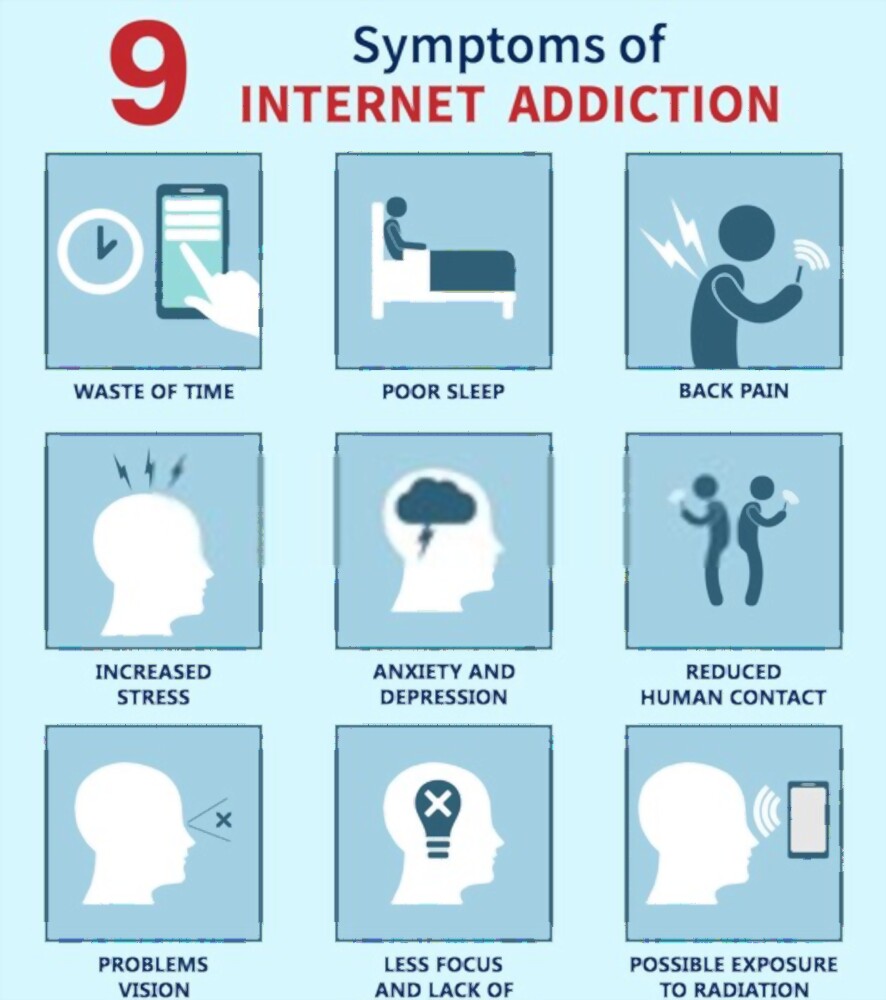Introduction to screen time hazards
With technological era, an increased use of digital media is prevalent in children. This however comes with a lot of physical, psychological, social and neurological adverse consequences. Screen time effects are determined using several factors. These include mobile use duration, content, dark-use, media type and the number of devices.
Excess screen time is associated with many Physical health effects. Some of these common effects are poor sleep and risk factors for cardiovascular diseases such as high blood pressure, obesity, low HDL cholesterol, poor stress regulation and Insulin Resistance. Apart from these common factors Other physical health consequences include impaired vision and reduced bone density.
Not only physical, but a lot of psychological factors are also affected. Research suggest that Depressive symptoms and suicidal are associated to increased screen time. There is activation of dopamine and reward pathways with violent content, which is thus associated with ADHD behaviour, antisocial and prosocial behaviour.
Neurological effects are also seen with increased screen time. These include less coping and substance dependence behavior.
All of us consider electronic media as a central part of our lives. Due to accessibility, the daily recommended 2 hour limit of screen time is over used by all of us
More than 75 % families own some type of smart device. Undoubtedly, we are provided with a lot of advantages with the tech – era. The access to fast information however comes with a loop of increasing health hazards.
In this article we focus on screen time effects on various hazards.
Hazards of screen time
Sleep
Cardiac issues
sympathetic arousal
vision
orthopedics
depression
ADHD
Addictive behaviour
Radiation

Screen time effects on sleep
Evidence suggests that on average, sleep in children was estimated to be one hour less per night. About 20 % children show sleep problems which in turn affects neuro- developmental factors of children. Therefore The duration and quality of sleep both seem to be affected and
This compromises ones mental health and thus psychosocial functioning.
Cardiovascular system
Increased idle time spent in sitting comes with excess use of television and video games. This increases risk of hypertension, obesity, high cholesterol, etc, it is thus important that we limit the time used by children on these devices and promote a healthy lifestyle.
Sympathetic arousal
Increased addictive behaviour for internet is associated with increased sympathetic arousal. This in turn poses a risk for cardiovascular diseases and disrupted sleep.
Vision and screen time
Considerable computer screen viewing can lead to eye fatigue, blurred vision, eye dryness, headaches, and discomfort. Such symptoms can be a result of glare, poor lighting or improper viewing setting.
Orthopedics
Sedentary behaviours may result in significant orthopedics effects. Screen time affects posture and creates a musculoskeletal load and discomfort. Such symptoms may be a result of the intensive repetitive wrist and arm movement, and head inclination found mostly during video game playing. It also leads to decrease in activity, reducing fitness levels, increasing risk of obesity.
Depression and suicidal behaviour
Depression is an increasing health concern. It is a prevalent disease among adolescents. children in the age range of 5–18 who were using digital media for over two hours per day have been shown to linked to depressive symptoms.
Attention deficit/hyperactivity disorder (ADHD)
ADHD is a neurodevelopmental disorder. It shows symptoms of inattention and hyperactivity. Children in the general population may display various ADHD symptoms. These include attention problems, hyperactivity, and impulsivity on a continuous basis. Such behavior is shown to be associated with high screen time.
Addictive screen time behaviour
The growing use of applications and texting is associated with addicitive behaviour. Males appear to demonstrate video game addiction. Females have shown an increased addiction towards social networking.
Predictive screen time behaviour
Exposure to aggressive behaviour during childhood may lead to violent behaviour adulthood. Exposure to violent content in TV and video games increases the risk for future violent behaviour.
Radiation and screen time
Exposure to radio-frequency electromagnetic radiation (RF-EMR) fields is increasing with increased children’s exposure to wireless devices. Children are more vulnerable to RF-EMR fields. This is because of the susceptibility of their developing nervous system. Also the brain tissue is more conductive in children, it thus allows more RF-EMR penetration.
also read – https://vcurehealthcare.com/resistance-training-everything-you-need-to-know-about-lifting-weights-part-2/

